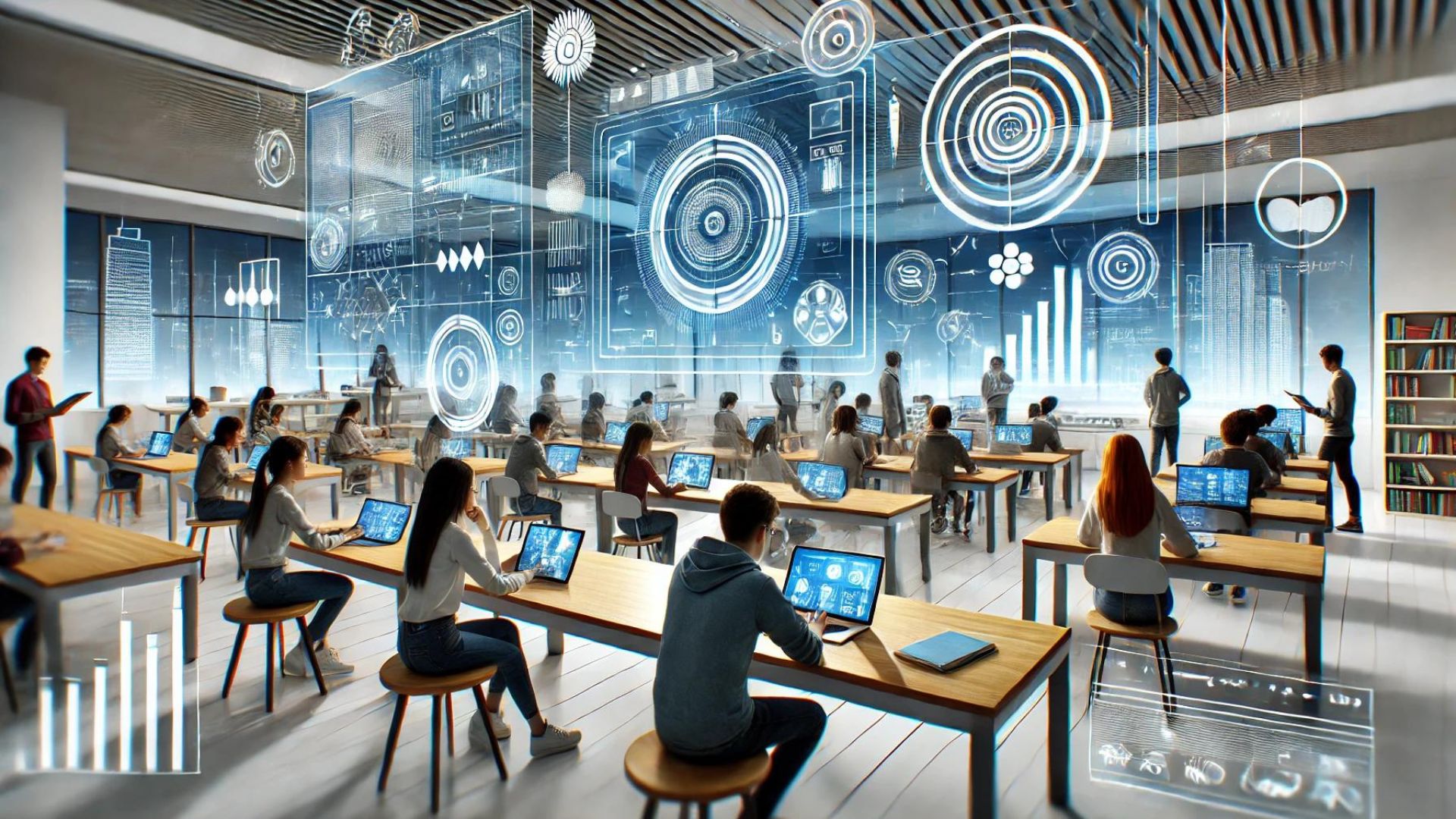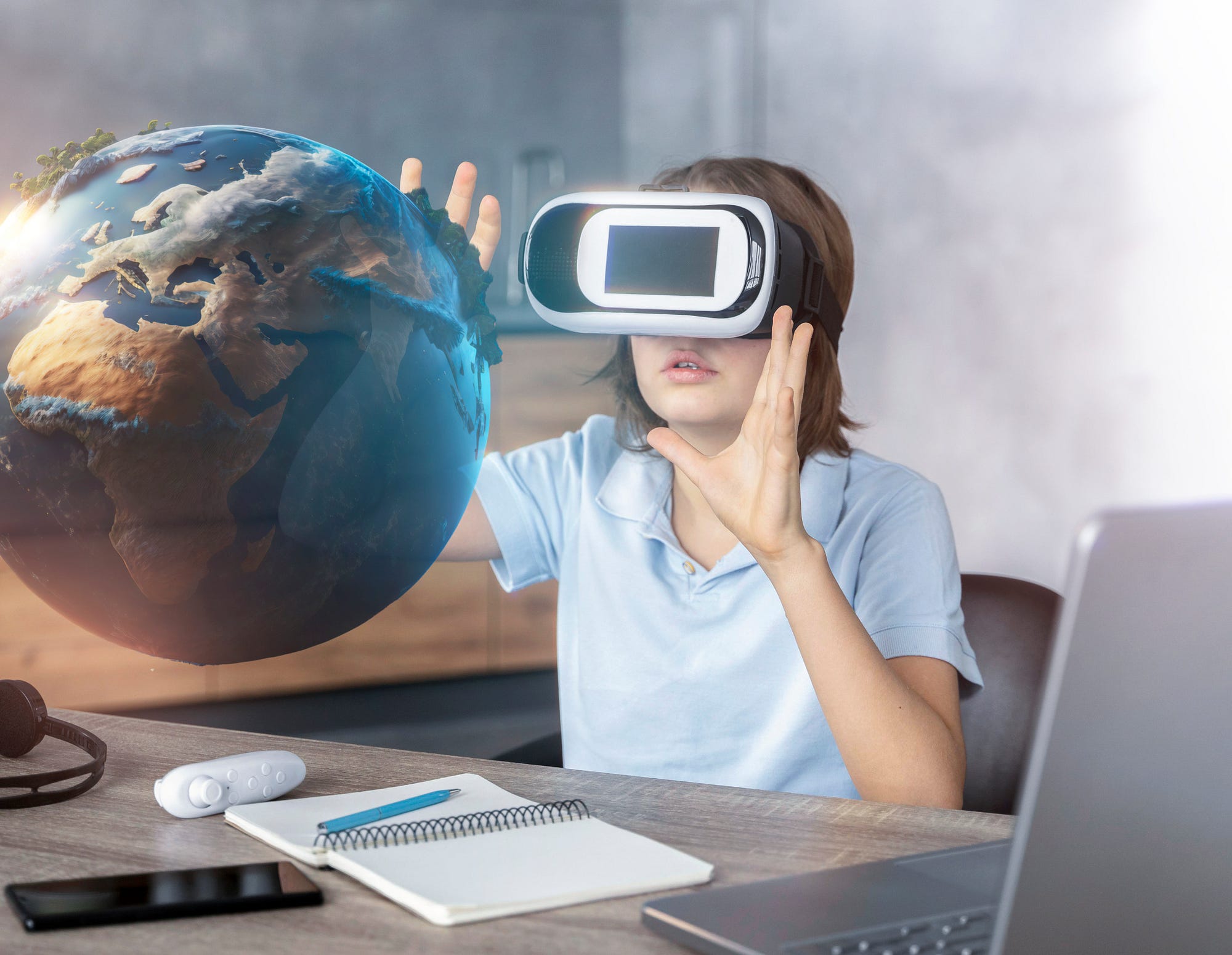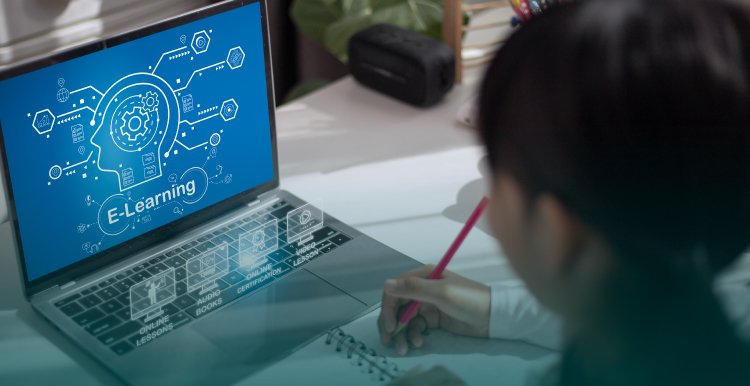
Introduction
Overview of Technology in Education
In the 21st century, technology has woven itself into the fabric of education, revolutionizing how knowledge is disseminated and acquired. From interactive whiteboards to online classrooms, the tools and platforms available today create dynamic and engaging learning environments. Imagine a classroom where students collaborate seamlessly with peers across the globe, leveraging applications that enhance their understanding and retention of complex subjects.
The rise of resourceful educational technologies—commonly referred to as EdTech—has provided educators with innovative ways to present content. This landscape has shifted from traditional teaching methods to more versatile approaches, fostering student engagement and promoting personalized experiences.
Significance of Technology Integration
Integrating technology in education is not merely an option but a necessity. Here’s why:
- Enhances Accessibility: Students can learn at their own pace, accessing resources anytime and anywhere.
- Promotes Engagement: Interactive elements, such as gamified learning apps, keep students motivated.
- Prepares for the Future: Familiarity with technology equips learners with essential skills for succeeding in a digital economy.
Reflecting on personal experiences, one can often recall a time when a simple online tool transformed homework into an interesting project rather than a mundane task. As technology continues to evolve, its integration in education becomes ever more significant, empowering students with the tools they need to thrive.

Evolution of Education with Technology
Traditional Education Systems
Before the digital age, traditional education systems largely relied on a one-size-fits-all model. Teachers delivered lectures, and students were expected to absorb information from textbooks and notebook scribbles. This method, while effective in some contexts, often neglected diverse learning styles:
- Standardized Approach: Lessons followed a strict curriculum without room for flexibility.
- Limited Feedback: Students received feedback primarily through graded assignments, with little room for continuous improvement.
- Passive Learning: Engagement levels varied since students were mere recipients of information.
Many can recall sitting in class, staring at a blackboard, yearning for more interactive and stimulating experiences.
Emergence of EdTech Solutions
The shift began with the emergence of EdTech solutions, introducing innovative tools that transformed how we approach learning. Suddenly, education became interactive and personalized. Examples include:
- Learning Management Systems (LMS): Platforms like Moodle and Canvas enable instructors to manage coursework efficiently.
- Interactive Software: Tools such as Kahoot and Nearpod foster collaboration and competition among students.
With these advancements, education became more inclusive and dynamic, empowering students to take control of their learning journeys while also catering to individual needs and preferences. This evolution signaled the dawn of a new educational era—one where technology and pedagogy intertwine for enriched learning experiences.

Impact of Technology in the Classroom
Advantages of Tech-Based Learning
The integration of technology in the classroom has opened up a wealth of opportunities for both educators and students. One only needs to look at the advantages that tech-based learning has brought to the educational landscape:
- Enhanced Engagement: Interactive tools such as quizzes and educational games keep students actively participating, making learning enjoyable.
- Access to Resources: Online libraries and educational platforms provide students with a treasure trove of information beyond textbooks.
- Flexibility in Learning: With resources available online, students can learn at their own pace, revisiting difficult topics as needed.
Reflecting on a personal experience, one can recall a moment when using an educational app transformed a challenging subject into an engaging project that boosted interest and understanding.
Challenges and Concerns
However, the journey toward a fully tech-enabled educational environment isn’t without its challenges. Some concerns include:
- Equipment Inequity: Not every student has access to necessary devices or reliable internet, which can create disparities.
- Distraction Risks: While technology can engage, it can also lead to distractions, with social media and gaming just a click away.
- Over-reliance on Technology: Excessive dependence might hinder the development of critical thinking and interpersonal skills.
Acknowledging these challenges is essential for creating a balanced approach that maximizes the benefits while addressing potential drawbacks. Ultimately, the impact of technology in the classroom is a multifaceted topic that requires careful navigation.

Role of Artificial Intelligence in Education
AI Applications in Teaching and Learning
As we delve deeper into the impact of technology in education, artificial intelligence (AI) emerges as a transformative force. The applications of AI in teaching and learning are both innovative and practical, reshaping classroom dynamics. Key applications include:
- Personalized Learning: AI-driven platforms can analyze student performance and tailor learning experiences to their individual needs, allowing for a more customized educational journey.
- Intelligent Tutoring Systems: Tools like Carnegie Learning offer immediate feedback, guiding students through problem-solving processes and reinforcing comprehension.
- Automated Administrative Tasks: AI can handle routine tasks such as grading, freeing educators to focus more on instruction and student engagement.
For instance, several educators have reported that implementation of AI chatbots has drastically reduced response times for student queries, fostering a more connected classroom environment.
Ethical Considerations
However, the integration of AI in education raises several ethical considerations that must be addressed. These include:
- Data Privacy: The collection and storage of student data can lead to privacy violations if not adequately protected.
- Bias in Algorithms: AI systems may inadvertently perpetuate biases, affecting the quality of personalized learning experiences.
- Job Displacement: There is concern that increasing reliance on AI could affect job security for educators, as some roles may become automated.
Navigating these ethical dilemmas requires a balanced approach, ensuring that AI enhances educational practices while safeguarding students’ rights and opportunities. As we embrace this technological advancement, critical discourse surrounding its implications will be essential for its responsible use in education.

Personalized Learning and Adaptive Technologies
Customized Learning Paths
Building on the role of artificial intelligence in education, personalized learning has emerged as a game-changer. Customized learning paths allow students to engage with content that resonates with their unique learning styles and paces. This approach offers several benefits:
- Individual Needs Assessment: Educators can identify specific skills that students excel in or struggle with, tailoring resources accordingly.
- Motivation Enhancement: By allowing students to explore subjects of interest, engagement and enthusiasm for learning are amplified.
- Flexible Learning Environments: Students can access materials at their convenience, fostering a sense of ownership over their educational journey.
Reflecting on an example, many students recall how project-based learning, supported by digital platforms, allowed them to delve into topics that piqued their curiosity, enhancing comprehension and retention.
Adaptive Assessment Tools
Accompanying customized learning paths are adaptive assessment tools that dynamically adjust to individual student performance. These tools provide a more accurate measurement of understanding by:
- Tailored Feedback: Students receive immediate insights into their strengths and areas for improvement, allowing for timely interventions.
- Real-time Adjustments: As students progress, these assessments can adapt in difficulty, ensuring appropriate challenges.
- Data-Driven Insights: Educators can analyze aggregated data to identify trends and foster informed instructional decisions.
The shift toward personalized learning and adaptive technologies not only transforms the learning experience but also empowers both students and educators to thrive in an increasingly complex educational landscape. As technology continues to evolve, so too will the possibilities for enhancing educational outcomes.

Virtual Reality and Augmented Reality in Education
Immersive Learning Experiences
Continuing from the exploration of personalized learning and adaptive technologies, virtual reality (VR) and augmented reality (AR) are pioneering new frontiers in educational experiences. These immersive technologies transport students beyond traditional classroom walls, allowing them to explore complex subjects in engaging ways. Some highlights include:
- Enhanced Engagement: Students step into simulated environments, making concepts visually tangible. For instance, imagine a biology class where students can explore the human body from the inside!
- Simulated Experiences: VR can recreate historical events, providing learners with a first-person perspective that ignites curiosity and deeper understanding.
- Safe Experimentation: Virtual labs allow students to conduct experiments without the risk associated with real-life scenarios, fostering a sense of exploration without the fear of failure.
Many educators who have incorporated VR report an increased interest and retention, as students are often more excited to engage with content they can “experience” firsthand.
Practical Applications
The practical applications of VR and AR in education are vast. From geography to language learning, here are some noteworthy examples:
- Field Trips: Virtual field trips enable students to explore landmarks, museums, or ecosystems that would otherwise be inaccessible.
- Interactive Language Learning: AR apps can overlay translations onto real-world objects, enhancing vocabulary acquisition through context.
- Professional Simulations: Medical students, for instance, can practice surgeries in a risk-free environment, refining their skills before working with real patients.
As these technologies advance, they promise to revolutionize educational practices, providing students with enriching experiences that cater to diverse learning styles and ignite a passion for discovery. The intersection of education and immersive technologies is indeed an exciting space for future exploration.

Online Education Platforms and E-Learning
Benefits of Online Learning
Having explored the dynamic world of virtual and augmented reality, we transition to another significant aspect of modern education: online education platforms and e-learning. The rise of digital learning environments offers numerous benefits that cater to the diverse needs of today’s learners:
- Flexibility: Students can learn at their own pace and at times that suit their schedules, making education accessible regardless of personal commitments.
- Diverse Resources: From videos to interactive modules, learners have a wealth of resources at their fingertips, accommodating various learning styles.
- Global Classroom: Online platforms connect educators and students worldwide, fostering cross-cultural interactions and collaborations.
Many first-time online learners often recount how convenient it was to access varied materials and communicate easily with peers and instructors through forums and chats, making education not only accessible but also enjoyable.
Future Trends
Looking ahead, several trends are shaping the future of online education:
- Increased Personalization: Advanced algorithms will tailor content even more effectively to individual learning preferences and progress.
- Micro-credentialing: Short, focused courses will gain popularity, allowing students to earn certifications that demonstrate specific skills.
- Blended Learning Models: A hybrid approach that combines online and in-person instruction will likely become the norm, leveraging the strengths of both mediums.
As we embrace these changes, it’s clear that online education is not just a temporary solution; it’s becoming an integral part of the educational landscape, poised to enhance lifelong learning opportunities for everyone. The journey into the digital realm of education is one filled with promise and endless potential.

The Digital Divide in Education
Disparities in Access to Technology
As we explore the evolving landscape of online education platforms, it becomes crucial to address a pressing issue—the digital divide in education. Despite the advancements in technology, disparities in access to resources persist, impacting students’ learning experiences. Several factors contribute to this divide:
- Economic Disparities: Many low-income families lack reliable internet access and devices, hindering their ability to participate fully in digital learning environments.
- Geographic Challenges: Rural areas may have limited access to high-speed internet, making it difficult for students to engage in online education effectively.
- Resource Limitations: Some schools, especially in underfunded districts, struggle to provide the necessary technological resources and training for both students and teachers.
Personal stories are often shared about students who rely on public Wi-Fi or work on assignments at libraries, highlighting the lengths some go to bridge this gap.
Addressing Inequality through Tech
However, there is hope, as various initiatives aim to address these inequalities through technology. Some strategies include:
- Community Programs: Many local organizations are partnering with schools to provide devices and internet access to families in need.
- Government Initiatives: Federal and state programs are increasingly recognizing the importance of connectivity, working to improve infrastructure in underserved areas.
- Innovative Learning Platforms: E-learning platforms are developing offline capabilities and data-saving features, making content accessible regardless of internet quality.
As we advance, bridging the digital divide will ensure equitable access to education for all students, empowering them to thrive in an increasingly digital world. The commitment to addressing this issue reflects a collective responsibility to create opportunities for every learner, regardless of their background.

Teacher Training and Professional Development
Importance of Tech Proficiency
Having explored the digital divide and its implications, we now shift our focus to a critical aspect of education: teacher training and professional development. As technology becomes an integral part of the learning environment, it’s essential that educators are equipped with the necessary tech proficiency. Here’s why it matters:
- Enhances Teaching Effectiveness: Proficient teachers can leverage technology to deliver engaging lessons that cater to various learning styles.
- Fosters Student Engagement: When educators are confident in using tech tools, they are more likely to incorporate them effectively, resulting in a more interactive classroom experience.
- Promotes Lifelong Learning: Teachers who embrace technology role-model adaptability and growth mindsets, encouraging students to do the same.
Many teachers share personal anecdotes about how mastering a new tool not only improved their lessons but also reignited their passion for teaching.
Training Programs and Resources
To support this essential proficiency, a variety of training programs and resources are available:
- Professional Development Workshops: Many districts host workshops focusing on specific tools and strategies for tech integration.
- Online Courses: Platforms like Coursera and edX offer courses tailored for educators, allowing for flexible learning opportunities.
- Peer Collaboration: Encouraging teacher collaboration through mentoring and sharing best practices can foster a community of tech-savvy educators.
As the educational landscape continues to evolve, ongoing professional development is crucial. Embracing these resources ensures that teachers are not only prepared to utilize technology effectively but are also empowered to inspire the next generation of learners in an ever-changing world. With adequate support and training, educators can transform challenges into opportunities, enhancing the overall educational experience.

The Future of Education: Technological Innovations
Predictions and Opportunities
As we venture into the exciting future of education, technological innovations promise to redefine learning experiences even further. Experts predict several key trends that will shape the educational landscape:
- Increased Use of Artificial Intelligence: AI will continue personalizing learning experiences, adapting to student needs in real time and providing tailored content.
- Enhanced Virtual and Augmented Reality: These technologies will create immersive experiences that engage students like never before, making subjects relatable and exciting.
- Remote Learning Growth: As online education becomes more mainstream, blended learning environments will flourish, accommodating diverse learning preferences.
Many educators look forward to these developments, recalling their initial struggles with tech integration, now transformed into excitement about the possibilities that lie ahead.
Implementing Sustainable Tech Solutions
To harness these innovations effectively, implementing sustainable tech solutions is vital. This can include:
- Eco-friendly Hardware: Schools can invest in energy-efficient devices that minimize environmental impact.
- Open Educational Resources (OER): Utilizing freely accessible digital resources can reduce costs and encourage collaborative learning.
- Conscious Digital Citizenship: Educators should incorporate lessons on responsible tech use, ensuring students understand both the benefits and the challenges of digital tools.
The path forward is laden with opportunities to create more inclusive, engaging, and effective learning environments. By embracing technological innovations and focusing on sustainability, we can prepare students for future challenges while safeguarding our planet. The future of education is bright, and with thoughtful implementation, it holds endless potential for transformation.

